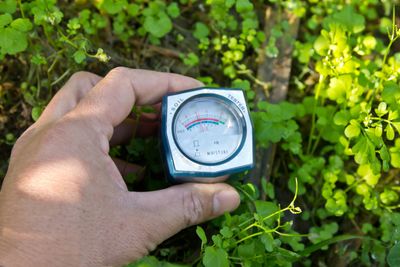Methods of Measuring Soil Moisture Content
How wet is my garden soil? How can I tell? Is it as simple as sticking your finger in the dirt? If you’re looking for an imprecise measurement then yes, it is. However, if you want a more scientific reading, then you’ll want to take some of these measurements: Soil water content – Quite simply, this is the amount of water present in a given quantity of soil. It can be measured as percent of water or inches of water per volume of soil. Soil water potential/Soil moisture tension – This measures how firmly attached the water molecules are to the soil. Basically, if the soil tension/potential is high, the water has a firmer grip on the soil and is harder to separate, making the soil drier and harder for plants to extract moisture from. Plant available water (PAW) – This is the range of water a given soil can hold that’s between saturation point and the point at which plant roots can no longer extract moisture (known as the permanent wilting point).
How to Check Soil Moisture
The following are tools frequently used for measuring soil moisture: Electrical Resistance Blocks – Also known as gypsum blocks, these tools measure soil moisture tension. Tensiometers – These also measure soil moisture tension and are most effective at measuring very wet soil. Time Domain Reflectometry – This tool measures soil water content by sending an electrical signal through the soil. More complex, time domain reflectometry may take some specialization to read the results. Gravimetric Measuring – More of a method than a tool, soil samples are taken and weighed, then heated to encourage evaporation and weighed again. The difference is the soil water content.
